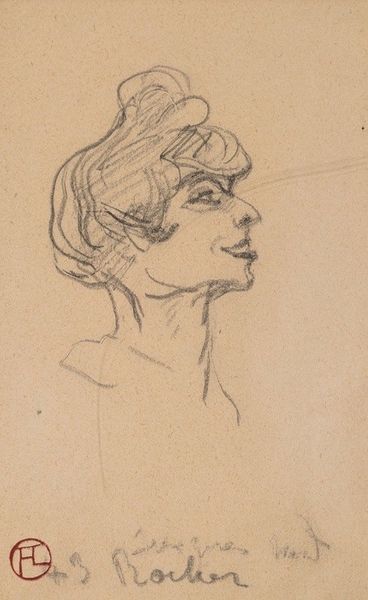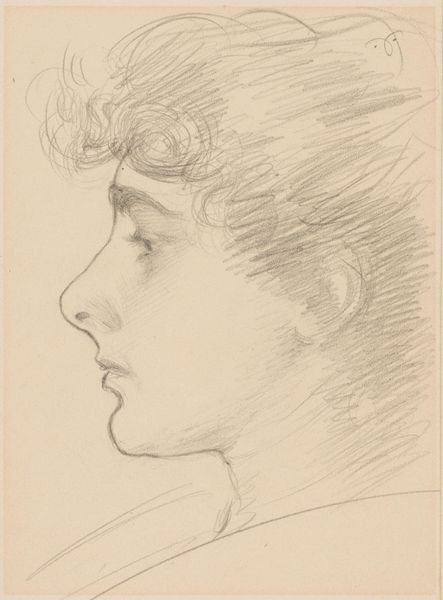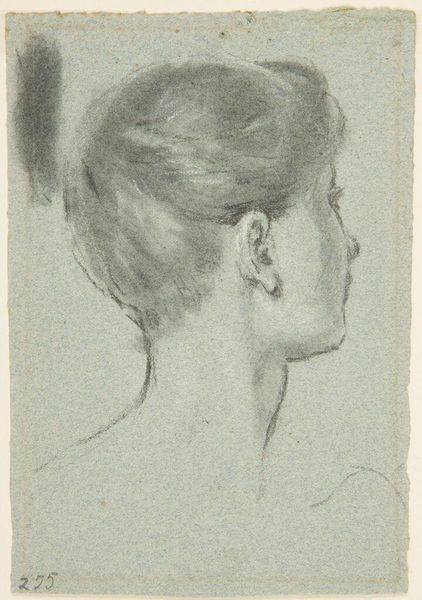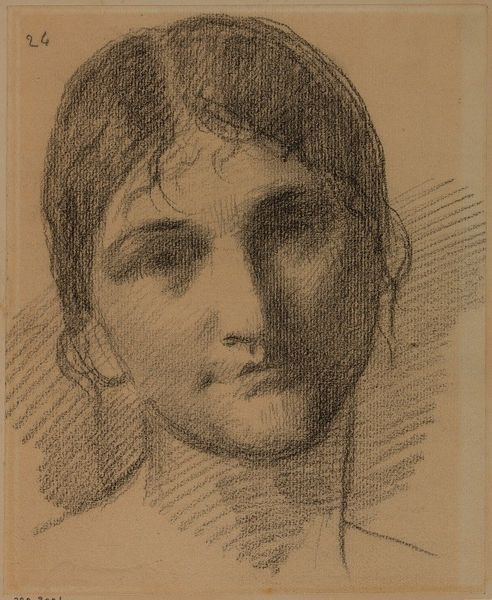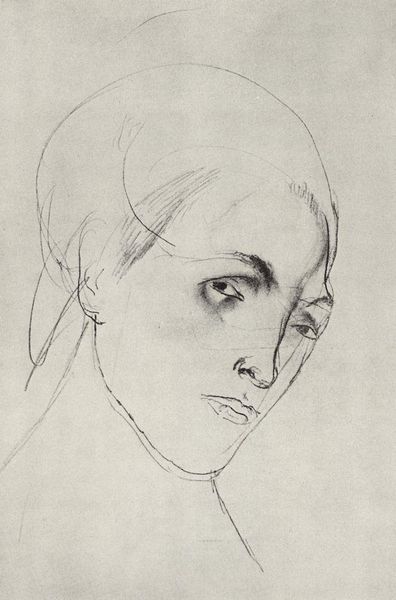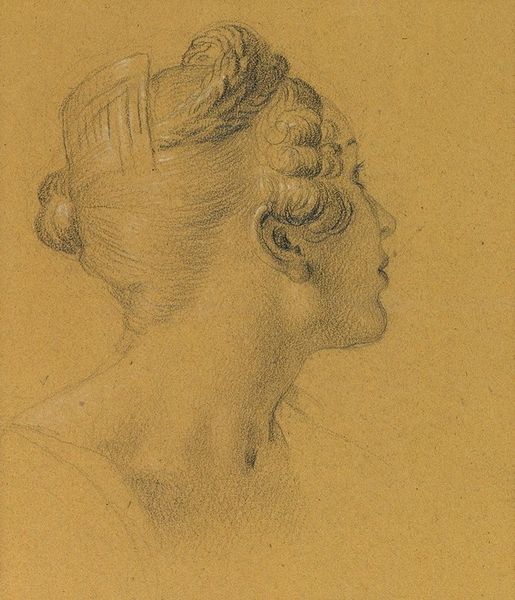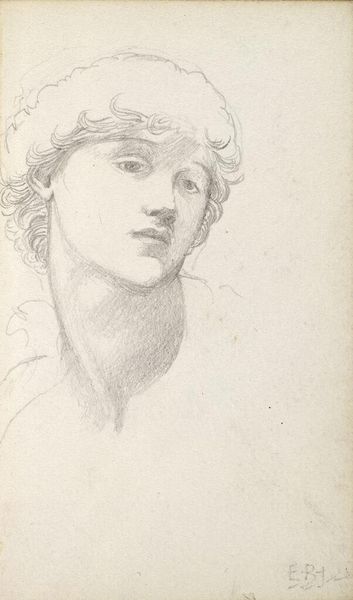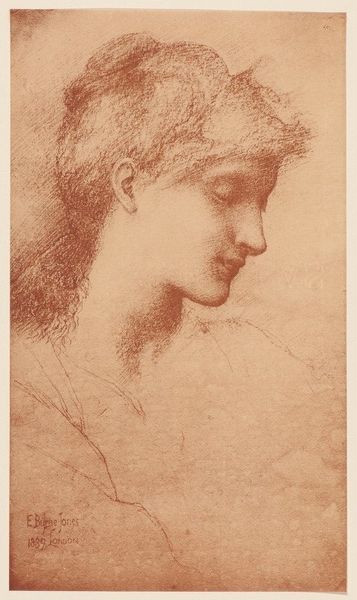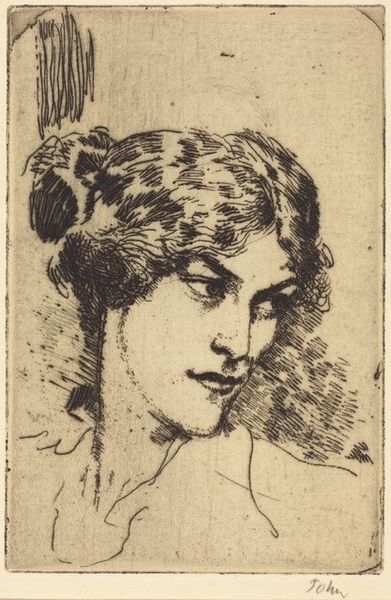
drawing, pencil
#
portrait
#
pencil drawn
#
drawing
#
figuration
#
pencil drawing
#
sketch
#
pencil
#
nose
#
portrait drawing
#
pre-raphaelites
Dimensions: 36.8 x 41 cm
Copyright: Public domain
Curator: The artwork before us, entitled "Head of a Youth," is an intriguing drawing attributed to Dante Gabriel Rossetti. Executed in pencil, it embodies a raw, almost sketch-like quality. Editor: Immediately, I’m struck by its intimacy. It feels like a glimpse into Rossetti’s private studio. The softness of the pencil work creates an ethereal quality. Curator: Considering Rossetti’s engagement with the Pre-Raphaelite Brotherhood, a close examination of its materiality proves quite insightful. The visible texture of the paper and the varied pressure of the pencil suggest a focus on the physical act of drawing itself, challenging any strict academic constraint in the process. This echoes a Pre-Raphaelite interest in returning to the presumed purity of pre-Renaissance art production methods, embracing handcraft over mass production. Editor: Absolutely. The gaze of the youth seems both distant and penetrating, which I consider very deliberate. When assessing portraits, we need to consider the societal implications, and the status that comes from sitting and commissioning the portrait, which I’m sure was only granted to few during his time. I am drawn to this piece because it departs somewhat from his later, more opulent oil paintings, this seems rawer, perhaps less touched by public expectation. It speaks volumes of his practice at the time, as the brotherhood encouraged the creation of portraits in response to industrial growth. Curator: The interesting fact about its raw presentation prompts us to ask, where was it made, and with which tools and materials? Who owned the original drawing upon completion and how has this influenced our own contemporary reception? Editor: Its existence is clearly important as we see value now in its simplicity and production. So what happens now with this image and how might the public view it as art from Rossetti versus mass pencil drawing production? It allows us to look back on the portraiture practices and its cultural and social importance in sitter, artist, audience, and commodity exchange. Curator: Indeed, reflecting on materiality unveils the value judgements historically associated with “finished” versus “unfinished” artworks, allowing appreciation of art-making for labour and production. Editor: In short, we are reminded about art’s significance for identity, memory and political rhetoric during periods of cultural transformation.
Comments
No comments
Be the first to comment and join the conversation on the ultimate creative platform.
